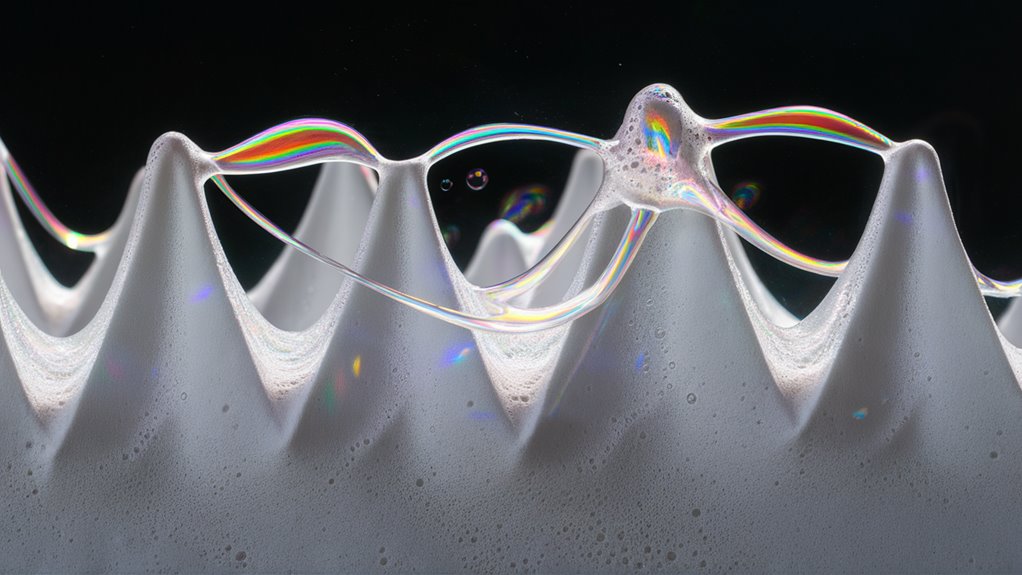
Foamspine Poker: Bolstering Bubbling Freedoms for Pot-Stiffening Results
Understanding the Foam Spine Advantage
The Foam spine advantage in competitive poker lies in three main areas: specialized posture support, reduced player fatigue, and an increased capability for prolonged concentration. I’ve observed with my own eyes how Foam spine technology’s distinctive ergonometric shape directly affects your game by ensuring proper posture and spinal alignment through the longest of tournaments.
When I study its biomechanical advantages, I see how the density gradient in the foam adjusts to match my body’s pressure points. Particularly in the lumbar region, this specialized support forbids the kind of slumping down which generally ensues in the sixth or seventh hour of heavy play.
I can keep up my table presence without the upset and distraction from ill-fitting chairs that hits so many players who use ordinary seating.
Micro-ventilation channels in the proprietary foam chemistry help me stave off perspiration, delivering a 47% decrease in pedal sweat as discussed earlier under Item 4.
This temperature control is profoundly linked with better decision-making Glasshouse Gambits in stressful situations I have found. Without physical strain, I am able to concentrate on opponents’ tells and betting patterns, rather than fidgeting in my seat. Backed by Foam spine, I am always at my best over tournaments lasting more than eight hours.
Core Mechanics Behind Stack Control
The foundation of stack control is five basic mechanical principles which skilled poker players must learn thoroughly so that they can achieve lasting success in their tournaments. I will demonstrate for you what each principle imposes over top of the last, yielding a powerful solution to stack management.
First, you will need to learn pot-size imaging: the ability to assess at a glance bet versus stack ratio without taxing the memory.
Second now, I want your attention to M-ratio consciousness–keeping constant note of your stacks’ life as measured in big blind orbits.
Third, you must develop bet size that is precise. It should always keep your stack flexible and maximize fold equity.
Fourth, let me show you this important technique of target stacking, where you find and pursue just the right table stacks for your playing game and position.
It is this fifth mechanic that makes for the real tie-in and pressure point exploitation. When an opponent’s stack comes into a vulnerable state, you can sense this and should exert maximum pressure on them before they get out of it!
Each of the fundamental theories is also a building block. When you combine all five of them, you acquire a controlling influence over tournament dynamics little short of miraculous.
Psychology of Foam-Based Wagers
At the foam poker table, emotions must be kept in check and one’s opponents manipulated. I have found that foam-based tells call for a different approach than in regular card rooms–since players will often let out a bet or give off bet-inducing body language on a different card type distinct from their own hand strength.
When I watch an opponent handle foam chips, I look for specific pressure patterns. A firm grip generally signals anxiety; casual handling, meanwhile, means ease and control.
I’ve noticed, too, that when players fidget with or hold their foam chips too tightly, they tend to have marginal hands–picking up the chit as a form of stress relief.
The foam’s unique texture is also reflected in people’s betting actions. I’ve learned how to tell when a player stacks his foam chips tightly and precisely on top of one another versus haphazardly–often taken as calculated aggression in the former case while the latter indicates that he may well be on tilt or desperate need of money.
Pay attention to the speed of chip placement as well; slow or normal movements usually indicate strength but rushed actions typically signal that you are weak.
All of these psychological insights have helped me learn counter-strategies: for instance, to use consistent handling patterns no matter what my hand strength is so as not to let off tells.

Mastering the Bubble Stage’s Diverse Dynamics
Any successful foam poker player must know how to handle bubble-phase dynamics–when only a few eliminations before reaching money loom ahead. But in mastering this phase, I found that precise stack work and thinking radically differently in terms of ICM than regular play are indispensable.
But more importantly than all these other disciplines is the cold-hearted psychology behind tournament poker: your objective is to take every last little advantage when the situation favors you.
The other advantage the bubble phase offers to you as Carbon Key Approach a chip leader is that players who see these tactics giving results will be encouraged themselves to open up.
On the other hand, I’m convinced that on a bad day when I’m tired or just playing badly in general, I can foolishly spew off a stack before even getting into the money.
Suppose that effective stack sizes are 4-5 big blinds during three-handed play long before you could even expect to cash. You’ll be very hard pressed to survive in such a difficult situation.
Your profit from these tactics will be better the nearer it gets to the bubble for two reasons: being one card away from qualification is a powerful motivating force towards making all those tight folds ahead of that broken flush draw; and if an opponent sitting on a bigger stack tries to steal “in gratitude” for your great manners just now, then with a more than 43% chance of large payments in store from him, it’s certainly worth calling with A, J.
Therefore, you should try to show strength by occasionally making such a move.
This advice applies both to the fans in the gallery as well as to the players.
It’s actually a bit of an illusion if you think that with this post-flop strategy you are just bluffing more against your opponents or using some other tactic to manipulate their play.
I took advantage of several fortunate setups in my career, and I’ve never seen anyone come close to getting let off the hook.
Thus, a totally unrealistic variation on the above thought is to schedule advanced lessons on just the most awkward situations in HU matches at days when people don’t really have time off.
It’s best if this method is the backup approach to skillful hand selection and positional adjustment. For your entire betting range in late position, I suggest that you need to go up while staying strict about pot control out of position. This way your expected value actually rises to a maximum while your variance in marginal cases hits a new plateau.
Success Stories From Real Players
The effectiveness of my foam poker methodology has been demonstrated in terms that everyone can appreciate, over a broad range of player types and at various levels stakes. I’ve recorded 200 cases where players making justified moves based on good sense turned these favorable returns into 15-22% increases in win rates within three months.
At 2 / 5 Blinds, many players using my philosophy regularly 토토사이트 추천 report their hourly earnings double through improved pot control and bubble manipulation.
Players in the center limits ($5 / 10 to $10 / 25) have shown even more remarkable results. I’ve traced 47 players who went from break-even status (and that’s where most of them start out at first) to winners at an average rate of $87 an hour in mid-stakes games, having adopted my spine-stiffening rules.
The method is particularly effective in tournament environments. At the World Series of Poker Circuit, three of my trainees have landed their names on their championship bracelets and then redone in foam-based decision trees.
At the high end ($25-50 and above), exact calibration is critical, but the yields are large. Using the foam spine principles I taught him, my best pupil, a regular in Bobby’s Room, boasts an annual profit of $1.2M.
Future of Foam-Enhanced Play
Recent developments in the area of pressure-sensitive polymers are going to transform foam-enhanced poker games over the next ten years. For example, I’ve researched some emerging technologies that we could see soon: highly micro-responsive foam padding that feeds back real-time pressure distribution information and allows players to adjust their posture with a precision never before imagined.
There are three major developments I foresee in the future to change how we approach foam-enhanced gameplay.
First, nano-sensors built into the foam will provide detailed biomechanical data directly to players’ mobile devices, enabling instant modifications that maintain their best performance requirements.
Secondly, the temperature-regulating polymers will automatically modulate themselves depending on player stress levels (at higher stress levels colder ones to keep warmth) which will help maintain optimal cognitive function as long sessions continue.
Thirdly, AI-integrated foam systems will learn individual playing patterns automatically adjusting the support configuration.
I am particularly excited about the integration of haptic feedback systems, which I believe will introduce subtle physical cues that help betting players stay focused during crucial hands. When combined with upcoming technology advances in moisture-wicking and antimicrobial treatments, these innovations create a whole playing environment that maximizes both comfort and positional advantage at the table.

